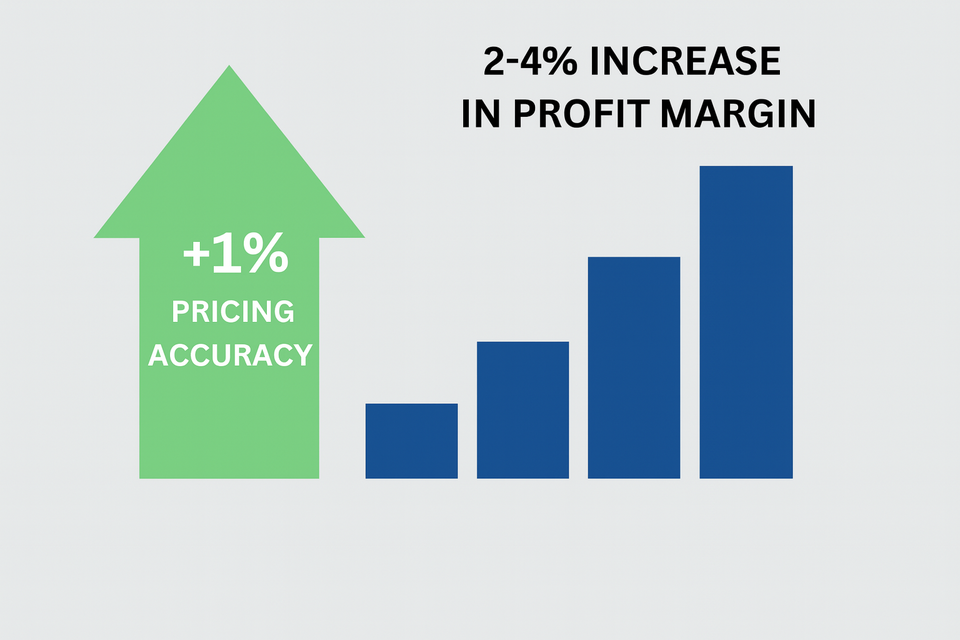Key Facts
Configure-Price-Quote (CPQ) is software that helps sales teams. It makes it easy to choose the right products, set correct prices, and quickly create quotes.
Key features of CPQ:
- Smart product selector.
- Automatic price updates.
- Works with CRM and ERP systems.
- Built-in approval steps.
- Templates that are easy to change and grow.
Benefits of CPQ for high tech:
- Faster sales.
- Correct quotes.
- More work done in less time.
- Higher profits.
- Happier customers.
Implementation steps:
- Set clear goals.
- Get data and systems ready.
- Train people to use it.
- Keep improving the system.
High-tech products and services come with intricate configurations, varied pricing models, and fast-changing offerings. This complexity can slow down sales and introduce errors in quotes. Configure-Price-Quote software is designed to tackle these challenges by streamlining how sales teams configure products, price deals, and generate quotes.
What Is CPQ Software and How Does It Work?
CPQ stands for Configure, Price, Quote. It is software that helps businesses put together the right products, set the correct prices, and create clear, professional quotes.
In simple terms, CPQ works like a smart helper for sales teams. It takes product details (usually from an ERP system) and pricing rules, then helps the salesperson build a product or service package that fits the customer’s needs.
The Critical Need for CPQ in High-Tech Industries
High-tech companies deal with special sales challenges, which makes CPQ more than just useful – it’s a must-have.
They sell a mix of hardware, software, services, and subscriptions. Trying to manage all the options and prices by hand is slow and full of mistakes.
That’s why CPQ technology made for high tech is designed to solve these problems.
They keep pricing consistent and flexible.
They help sales teams spot chances to sell more or upgrade deals.
They make complex product setups easier.
And they make the whole sales process faster and more efficient.

Key Challenges CPQ Solves for High-Tech Companies
Implementing CPQ in a high-tech company directly targets several pain points that commonly plague the sales process. Below, we outline these key challenges and how CPQ platform for high tech helps solve them:
Preventing mistakes in quotes and lost revenue
Manually creating quotes using spreadsheets or outdated tools can lead to mistakes.
A wrong price here, a missing component there. This, in turn, causes revenue leakage.
A sales rep might give an unauthorized discount or omit a billable item, resulting in money left on the table.
High-tech deals involve complicated pricing (e.g. multi-year subscriptions, bundles of products), which multiplies the chance of human error.
CPQ software virtually eliminates these quote errors by automatically enforcing pricing rules and product configurations. It ensures every item on a quote is valid and every price is calculated according to approved policies.
By removing manual calculations, CPQ software for high tech reduces the risk of costly mistakes and missed charges. Industry analyses have noted that inconsistent pricing practices and quoting errors can sap profit. One study found that even a 1% improvement in pricing accuracy can translate to a 2-4% increase in profit margin.
CPQ addresses this by centralizing and automating the pricing data, so sales reps always quote using the latest, correct information. In turn, companies avoid the revenue leakage that occurs when quotes are done ad hoc. In short, the CPQ system for high tech provides high-tech firms a safety net: it catches configuration or pricing errors before the quote ever reaches the customer, protecting your revenue and your reputation.
Speeding up long sales cycles
Complex sales can drag on when every quote revision or special approval takes days. High-tech sales cycles are lengthened by back-and-forth steps: the rep configures a solution, Finance reviews the pricing, and a manager signs off on a discount. All while the customer waits. CPQ tools for high tech speed this up dramatically. By automating the configuration and pricing steps (and embedding approval workflows), a CPQ allows sales teams to generate accurate quotes in minutes instead of days.
Ensuring pricing consistency and compliance
Maintaining consistent pricing practices is a major concern for tech companies, especially as product catalogs and discount programs grow. Without CPQ implementation for high tech, two salespeople might quote different prices for the same configuration, or offer discounts that violate company policy.
This inconsistency not only looks unprofessional, but it can also erode margins and even cause compliance issues (if special pricing requires approval but isn’t obtained).
CPQ software ensures that every quote follows the same approved pricing logic and discount rules. All sales reps use a single source of truth for prices and are constrained by the system from offering unauthorized discounts. The result is uniform pricing across regions, channels, and sales reps.
Making complex product setups simple
High-tech products and services can be very tricky to set up. A single solution might include hardware, software licenses, cloud services, and support – all in one offer.
- Sales reps need to make sure every part fits together and is set up correctly. Doing this by hand is like solving a Rubik’s Cube – it’s easy to miss something or make a mistake.
- CPQ software makes this much easier. It uses guided steps and built-in rules to help reps choose the right features.
- The software shows an interactive screen where reps can pick options and add or remove parts. It also makes sure all the choices work together – like saying, “If you choose Option A, you also need Service Plan B.”
- With CPQ, even the most complex product bundles can be set up without errors.
Essential CPQ Features for High-Tech Companies
To address the challenges above, a CPQ solution needs a robust feature set. High-tech companies, in particular, should look for the following key features when evaluating CPQ software:
Smart product configurator with built-in rules
At the heart of CPQ is the product configurator. The tool that lets you build a custom product or service package by choosing among various options.
- For high-tech use, this configurator must handle complex products with many interdependencies. An advanced product configurator allows sales reps (or even customers, in a self-serve model) to visually select components, features, and service options, all while the system applies preset business rules to prevent invalid combinations.
- This is crucial in high-tech because products often have technical constraints (a certain software module might only run on specific hardware, or two modules might conflict). A good CPQ ensures that only compatible, feasible configurations can be made. Modern configurators may include 3D visualization or guided questionnaires to simplify the process. By using a CPQ product configurator, sellers can spend less time checking technical details and more time addressing customer needs.
Automatic pricing and easy discount management
High-tech pricing can be anything but straightforward. There may be one-time fees, recurring subscription charges, usage-based pricing, tiered discounts, and promotional offers all in the mix.
- Capable CPQ products for high tech come with a dynamic pricing engine that can calculate accurate prices on the fly for any configuration. This engine applies all relevant pricing rules: volume discounts, customer-specific pricing, regional price lists, currency conversion, etc., automatically.
- If a customer selects a three-year SaaS subscription along with hardware, the CPQ might automatically apply a multi-year discount on the software portion and include the appropriate support fees for the hardware. CPQ’s pricing engine takes the guesswork out by doing these calculations instantly and correctly.
Integration with CRM and ERP systems
CPQ software for high-tech companies doesn’t work alone. It works best when connected to your other business tools, like CRM and ERP systems.
- Connecting CPQ to your CRM (Customer Relationship Management) system is very helpful. It can automatically pull in customer details, deal status, and other useful info. This saves the sales rep from entering the same data twice. After the quote is done, CPQ can send the quote details back to the CRM. This keeps everything updated and in one place.
- ERP (Enterprise Resource Planning) integration is just as important. The ERP system usually stores product data, pricing, and inventory. A good CPQ tool pulls this info directly from the ERP. That way, quotes always show the correct products, prices, and stock levels.
- When the customer agrees to a quote, the CPQ can send the order or product list (BOM – bill of materials) to the ERP. This helps the company deliver exactly what was promised.
Approval workflows and governance
Sales proposals in high-tech often require sign-offs. Perhaps a sales manager’s approval for a large discount, or legal approval if custom terms are included. Handling these approvals via email chains can be slow and opaque. A good CPQ system includes built-in approval workflows to automate and govern this process.
You can configure rules such as: “If deal discount > 20%, route to Finance for approval” or “If configuration includes a non-standard component, require engineering sign-off.”
The CPQ then automatically triggers these workflows when a rep finalizes a quote meeting the criteria.
Approvers get notified (often within the CPQ or via email) and can approve or reject with a click.
This feature is invaluable for governance. It ensures that nothing outside of policy goes out to the customer without the right review.
Scalable quote and proposal templates
In enterprise tech sales, the output of the CPQ process isn’t just an internal price. It’s a customer-facing quote or proposal document. Crafting these documents manually for each deal is time-consuming and can lead to inconsistency in branding or legal terms. CPQ solutions address this with scalable quote and proposal templates.
- Essentially, you set up templates for your quotes/proposals that include your company’s branding, standard legal clauses, and placeholders for dynamic data like the customer name, products, prices, and dates. The CPQ then automatically fills in the template with the details of each quote.
- This means every proposal that goes out looks professional and consistent, whether generated by a rep in London or in San Francisco. Templates can usually be tailored for different scenarios. For example, a short form quote vs. a detailed proposal with scope of work. And the CPQ will select the appropriate one based on deal criteria.
Benefits of Implementing a CPQ Solution
Adopting a CPQ solution in a high-tech environment yields significant benefits across the sales and revenue cycle. Here are some of the top gains companies can expect:
Faster revenue generation
One of the most immediate benefits of CPQ is a faster sales cycle, which directly accelerates time-to-revenue. By automating quote generation and reducing the back-and-forth due to errors or approvals, CPQ lets deals close more quickly.
Improved sales team efficiency
Another big benefit of CPQ is that it helps sales teams work faster.
With old tools, salespeople spend a lot of time on boring tasks – like setting up products, looking for the right prices, and checking quotes.
CPQ does these tasks automatically. This gives sales reps more time to talk to customers and make sales.
Some say CPQ can cut quote time by more than half. That means reps can work on more deals at the same time.
Better deal margins and higher profits
CPQ isn’t just about speed – it’s also about selling smarter. By ensuring that every deal is structured and priced optimally, CPQ helps improve deal margins and overall profitability. There are a few ways this happens.
- First, CPQ’s consistent pricing and discount enforcement means you’re not accidentally giving away margin through errors or rogue discounts. Each quote reflects the intended pricing strategy, protecting your target margins.
- Second, CPQ often includes guided selling and upsell recommendations. It can prompt the rep to include related products or services the customer might need. This naturally increases average deal size (and thus margin) by capturing more cross-sell/up-sell opportunities that a rep might overlook on their own.
- Third, the analytics from CPQ can inform better pricing decisions: by capturing win/loss data at various price points, product managers can refine pricing to maximize profit.
Better customer experience
When sales processes are efficient and error-free, customers notice. And that translates to a better buying experience. CPQ plays a big role in delivering a superior customer experience for B2B clients. How?
- For one, speed. Customers receive timely, accurate quotes instead of waiting days or weeks. In the high-tech world, where customers might be evaluating multiple vendors, being first with a clear and tailored proposal can seriously impress them. Speed conveys professionalism and responsiveness.
- Next, accuracy and clarity: a CPQ-generated quote is legible and correct. There are no embarrassing mistakes like wrong part numbers or mis-priced items that can erode customer trust. The quote document is also usually well-formatted (thanks to templates), which gives a polished impression of your company.
- Furthermore, CPQ enables a level of customization and complexity-handling that improves how well the proposal fits the customer’s needs.
Implementing CPQ in a High-Tech Environment
Implementing a CPQ solution is a significant project, but a well-executed implementation will pay dividends in the long run. High-tech companies should approach CPQ implementation methodically. Here are key steps and considerations for a successful rollout:
Setting clear goals and requirements
Start by clarifying what you want to achieve with CPQ. This means getting stakeholders together and aligning on the business goals. Are you trying to shorten quote turnaround time by 50%? Improve quote accuracy? Enable new pricing models? Be as specific as possible.
Preparing data and planning system integration
Data is the fuel that powers a CPQ engine. High-tech companies often have product data (SKUs, prices, configurations) spread across spreadsheets, ERP systems, and tribal knowledge. Preparing your data is a crucial early step. This involves cleaning up the product catalog, consolidating pricing information, and ensuring all the rules and options are documented.
Training users and managing change
No matter how powerful a CPQ tool is, its value will only be realized if your team adopts it. High-tech companies must pay careful attention to user training and change management when rolling out CPQ. Remember that sales reps and others have likely been doing quotes a certain way for years; switching to a new system is a change in habit as much as a change in tool. To ensure success, invest in comprehensive training programs. This should include hands-on training sessions where reps can practice configuring and pricing in the new CPQ system with real examples.
Continuous optimization and maintenance
Implementing CPQ is not a “set it and forget it” exercise. Especially in the dynamic high-tech industry. After you go live, it’s important to have a plan for ongoing optimization and maintenance of the CPQ system. Think of your CPQ like a living system that should evolve as your business changes. New products will be introduced, pricing strategies will be updated, and sales processes might shift. Your CPQ needs to reflect these changes to remain effective.
Why High-Tech Companies Should Choose CanvasLogic for CPQ Solutions
CanvasLogic offers a powerful 3D and augmented reality product configurator integrated with its CPQ software, enabling high-tech companies to visually configure complex products. This means sales teams and even customers can see and customize hardware or devices in 3D, ensuring they get exactly the right configuration. The result is more engaging quotes and error-free orders since the visualization and rules engine prevent invalid combos.
High-tech businesses need flexibility as their sales channels and platforms evolve. CanvasLogic builds bespoke CPQ solutions that integrate seamlessly with your entire sales ecosystem. From ecommerce platforms to CRM and ERP systems. This integration capability ensures that introducing CanvasLogic CPQ won’t disrupt your current processes; instead, it will enhance them by connecting all the dots (product data, customer data, orders) behind the scenes.
Conclusion
Implementing a CPQ solution in a high-tech company is a transformative step that accelerates sales and simplifies complexity. Companies that leverage CPQ effectively are finding they can close deals faster, grow revenue quicker, and delight customers more consistently in the fast-paced world of tech. It’s a powerful tool in the arsenal of any high-tech business looking to accelerate sales growth while keeping complexity under control.
FAQ
What is the average implementation timeline for a CPQ solution in a mid-sized high-tech firm?
The implementation timeline can vary based on the complexity of your products and data, but for a mid-sized high-tech company, the CPQ rollout is on the order of a few months. Industry benchmarks suggest that a relatively straightforward CPQ implementation (for a business with around 50-100 customers and moderate product complexity) might take roughly ~6 months to go live.
What are the typical data security considerations when choosing a CPQ vendor for a high-tech company?
When evaluating CPQ vendors, high-tech companies should treat data security as a top priority. The CPQ will house sensitive information like customer details, pricing, quotes, and possibly payment or subscription data. Key security considerations include: access control (the CPQ should support role-based access, ensuring that users only see and edit what they’re authorized to), data encryption (both in transit and at rest. For example, using TLS encryption for data moving between the CPQ and your systems, and encrypting the database contents to protect against breaches), and compliance with industry standards.
How does CPQ support the sale of products that include both hardware and SaaS subscription components?
CPQ is very well-suited to handle hybrid offerings that mix one-time hardware products with recurring SaaS (Software-as-a-Service) subscriptions. It provides a structured way to sell them together as part of one solution while accounting for their different pricing models. Here’s how it works: product bundling and configuration rules in CPQ can link hardware and SaaS items so they can be selected together easily. For example, a CPQ bundle might include a device (hardware) and an annual subscription plan for software. The sales rep can add both with one click, and the CPQ will ensure they’re correctly associated.



